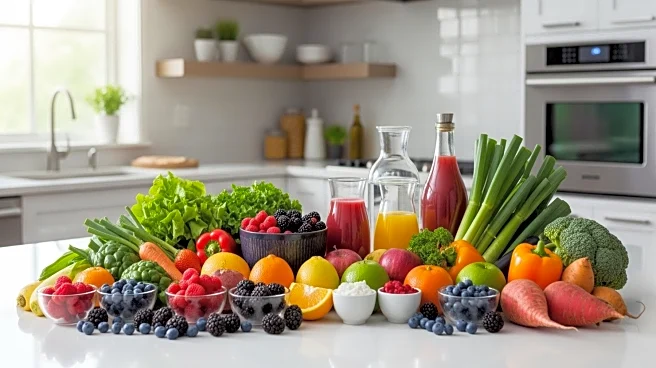What's Happening?
Researchers have developed a new iron supplement that aims to treat iron-deficiency anemia without causing the common side effects associated with traditional iron supplements. This new formulation, reported
in ACS Applied Materials & Interfaces, combines iron with prebiotics and probiotics. In animal studies, this innovative supplement successfully restored healthy blood iron levels in anemic mice while preventing inflammation and maintaining a balanced gut microbiome. The research, led by Poonam Sagar and Nitin Kumar Singhal, builds on previous studies that combined iron with probiotics by adding prebiotics to enhance the supplement's effectiveness and gentleness on the digestive system. The supplement includes dietary fiber from millet, the probiotic Lactobacillus rhamnosus, and an iron-containing complex. Tests on mice showed restored hemoglobin levels, improved iron absorption, and minimal inflammation, suggesting a promising new approach to treating anemia.
Why It's Important?
This development is significant as it addresses a major drawback of traditional iron supplements, which often cause digestive issues due to unabsorbed iron. By integrating prebiotics and probiotics, the new supplement not only improves iron absorption but also supports gut health, potentially reducing the need for additional medications to manage side effects. This could lead to better patient compliance and outcomes in treating anemia, a condition affecting millions worldwide. The research highlights a shift towards more holistic and biocompatible treatment options, which could influence future nutritional and pharmaceutical approaches to managing iron deficiency and other related health issues.
What's Next?
Further research is needed to confirm the efficacy and safety of this new supplement in humans. If successful, it could lead to the development of a new generation of iron supplements that are both effective and gentle on the digestive system. This could have significant implications for public health, particularly in populations where anemia is prevalent. The research team plans to continue their studies to better understand the mechanisms at play and to optimize the formulation for human use. Regulatory approval and clinical trials will be necessary steps before the supplement can be widely available.











